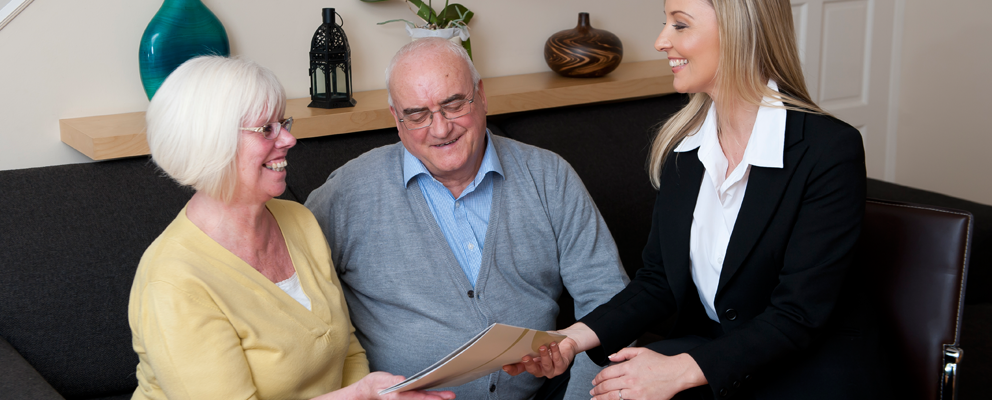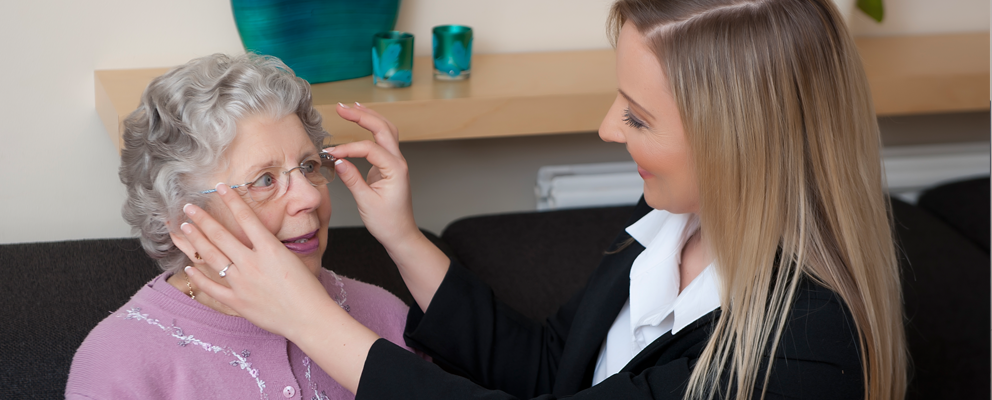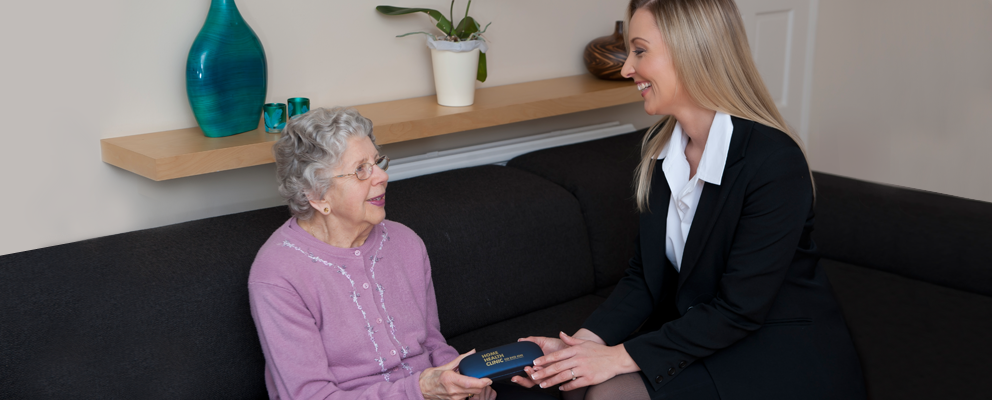An eye test takes around 30 minutes.
Once you are settled and ready to start, your Optometrist will begin by asking you questions in order to gather information about you, your health, lifestyle and any concerns about your eyes including any visual problems you may have.
This is very important as it allows the eye test to be tailored to your specific needs and your questions concerning your eyes to be answered completely. Following this, the Home Visit Optician will:
Examine the Health of the Eye
Using the light from a slit lamp (similar to a microscope) and ophthalmoscope (an eye torch), the Optometrist will thoroughly check the front and back of your eyes.
The retina has a network of blood vessels that supply the eye. It follows that many medical conditions such as blood pressure, diabetes and cholesterol may be detected through the eyes.
Determine how clearly you can see
A retinoscope, test chart and lenses are used to evaluate your vision at all distances. This part of the eye examination determines whether you are long or short sighted, and if your eyes are round in shape or oval (astigmatic). This refraction process leads to your final spectacle prescription.
The retinoscope is quite accurate and allows the Optometrist to determine the prescription needed. This is also very useful when examining individuals who may have challenges with communication.
Check your Binocular Vision capabilities
Good vision involves more than seeing clearly. Your visual system needs to be able to control both eyes so that they work together, allowing your brain to interpret the images from each eye into a single picture.
Assessing the muscle control and coordination of your eyes will tell us how well your eyes move and work together.
Measure the Pressure of the Eye
A tonometer is used to check the pressure inside your eye.
Our tonometer uses a ‘rebound’ method to determine the pressure inside the eye tests. There is no puff of air or drops to use and most patients can not feel anything during the process
Measuring the pressure inside the eye helps us to detect glaucoma and other such conditions.
Test Your Peripheral vision
A visual field screener is used to test your peripheral vision. This will involve looking into a machine that presents flashing green lights on its inner back surface. You are then required to indicate how many of the dots you can see.
Answer all your questions and discuss your needs
At the end of the eye tests at home, the Optometrist will discuss your vision, any change in your spectacle prescription and the health of your eyes.
Spectacles or other visual aids will be recommended if necessary as well as advice on healthy living which can benefit your eyes. If for any reason it is necessary to refer you to another medical professional, this will be discussed with you first.
You will also have the opportunity to ask your Optometrist any further questions you have concerning your eyes and also plan your next eye examination.
Your Eyecare report
It can be difficult to remember lots of information and also communicate this in detail to your family and carers.
We will leave a report of your vision and any recommendations for you to show the important people in your life. If you have any questions, you can speak with your Optometrist directly at any time.
Book your eye test at home by calling us today on 020 8428 4068.


